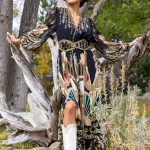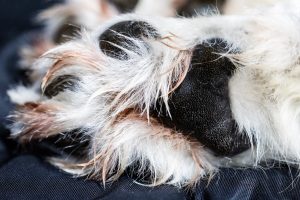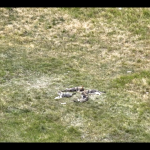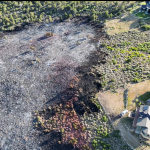Saddle Sore: Balance, absence, and the question remains

Tony Vagneur/Courtesy photo
It made sense to ask people who had been here millennia before the white man, what knowledge had been passed down about the idea of “balance of nature.” Asked my Ute friends about wolves and the idea of restoring the “balance of nature” in Colorado — or more specifically, in the Roaring Fork Valley — and the response was softer, gentler than you might expect.
Wolves haven’t hunted here in over 100 years, and in that time, nature has adapted, shifted, and changed. So have we. The land is now a mix of wilderness, working ranches, recreation, 35-acre ranchettes, and year-round towns. Whatever balance once existed has long since been replaced by something messier, more human. And wolves, despite the myths we wrap around them, are stepping back into a landscape that’s already been spoken for.
In their absence, elk and deer didn’t overrun the hills unchecked. Mountain lions and bears filled some of the predatory role. Fences went up. Roads cut migration paths. And cattle — grazing year-round in the valleys — became part of the ecological equation. So when wolves returned, they didn’t come back to a Yellowstone-style wilderness. They came back to our reality: cows in pastures, kids at bus stops, and land managers trying to referee a fight that was inevitable the moment the first reintroduced wolf from Oregon was let out of his transportation crate.
Let’s be clear: Wolves don’t prefer beef. They prefer what they’ve evolved to hunt: elk, deer, moose. Animals that run. We took the buffalo away from them eons ago. But hey, wolves are opportunists. If a cow is vulnerable — calving, injured, isolated — they may take her or her calf. And when they do, it’s not out of spite or preference. It’s because it was there, and either it didn’t run, or the calf, as calves often do, ran. A wolf doesn’t ask if the meat is tagged or branded. It just sees a chance. Its DNA is wired that way. This is the dance of death, and it’s been going on longer than humans have been writing myths about it.
And that’s the source of the tension. Placing reintroduced wolves in the middle of cattle ranching communities. Common sense would seem to say that would be the location of last resort. Ranchers are discovering what the textbooks didn’t quite explain: Wolves don’t stick to wilderness boundaries. They don’t politely stay in the high country or follow old maps of elk migration. They come low, follow scent and instinct, and sometimes leave behind a calf carcass as the only evidence they were there. For ranchers, it’s not just a loss of income — it’s a loss of peace, a feeling that the rules of the range have been rewritten without consent. Colorado Parks and Wildlife, tasked with managing both the wolves and the compensation programs, finds itself caught in the middle. The agency must balance public enthusiasm for wolves with private frustration, and so far, nobody’s walking away satisfied.
Still, in all this — beneath the anger, the headlines, the photos of bloodied hides — the ancient dance continues. Predator and prey are locked in a rhythm older than our fences. The wolf tests the herd. The calf hesitates. The chase begins. Sometimes the wolf wins. Sometimes the rancher — or range rider — finds the signs too late. This is the dance of death: not poetic, not fair, but deeply real.
People like to point to Yellowstone as proof of what wolves can do — how their return sparked riparian recovery and ecological renewal. But we’re not Yellowstone, and we’ve learned that although an apex predator, wolves are not at the top of a perfect “trophic cascade.”
We’re a living, working landscape, and wolves here aren’t symbols. They’re animals, hunting what they can, where they can. And we’re left wondering how in the hell a ballot initiative that contained implied half-truths and empty promises (balance of nature; trophic cascade) passed, leaving the success or failure of the initiative on the backs of the cattle and sheep ranchers in Colorado.
The question remains, although this writer believes it has been answered: Can wolves fit into the life we’ve built in their absence?
Tony Vagneur writes here on Saturdays and welcomes your comments at ajv@sopris.net.
Tony Vagneur writes here on Saturdays and welcomes your comments at ajv@sopris.net.









